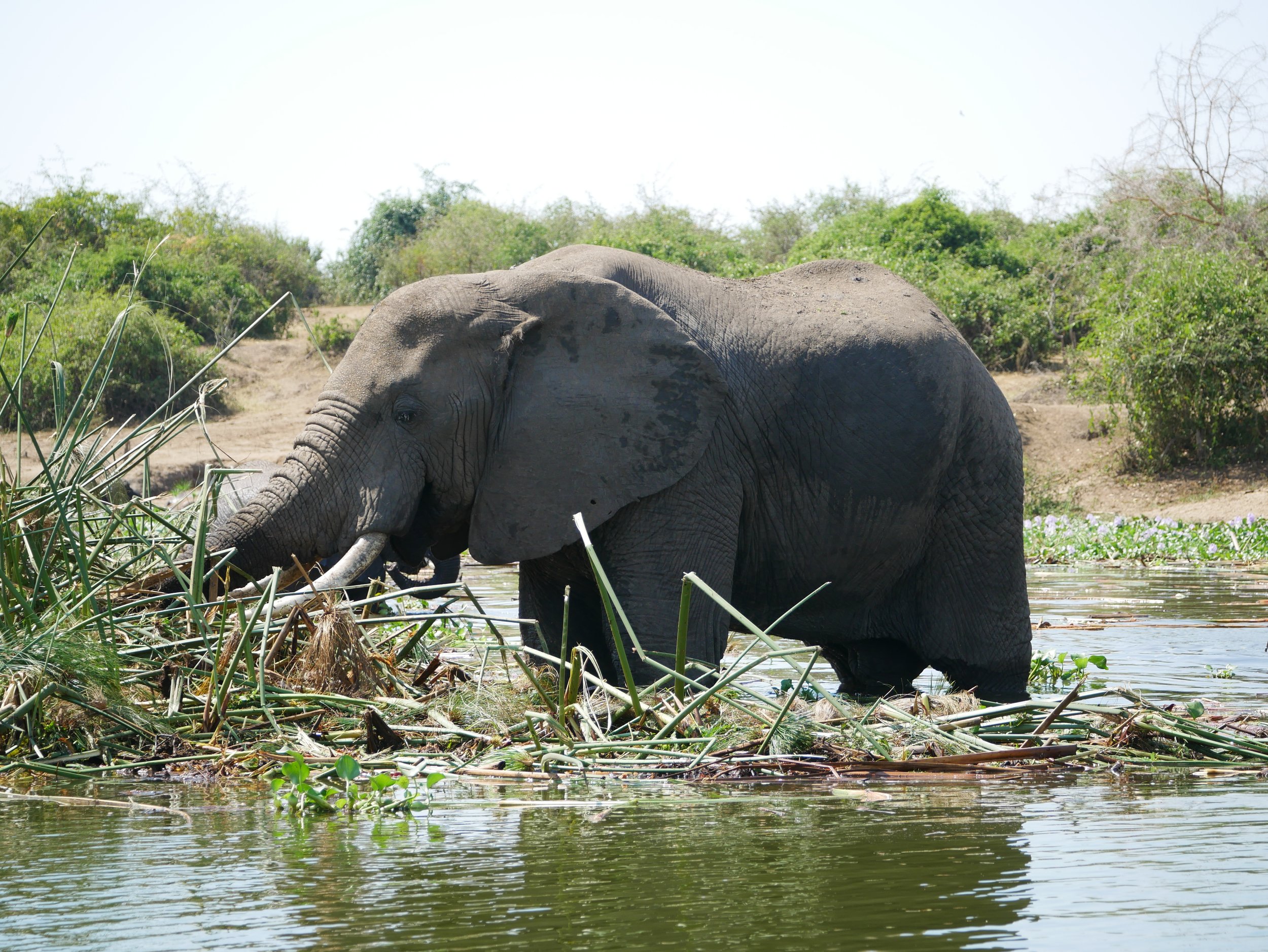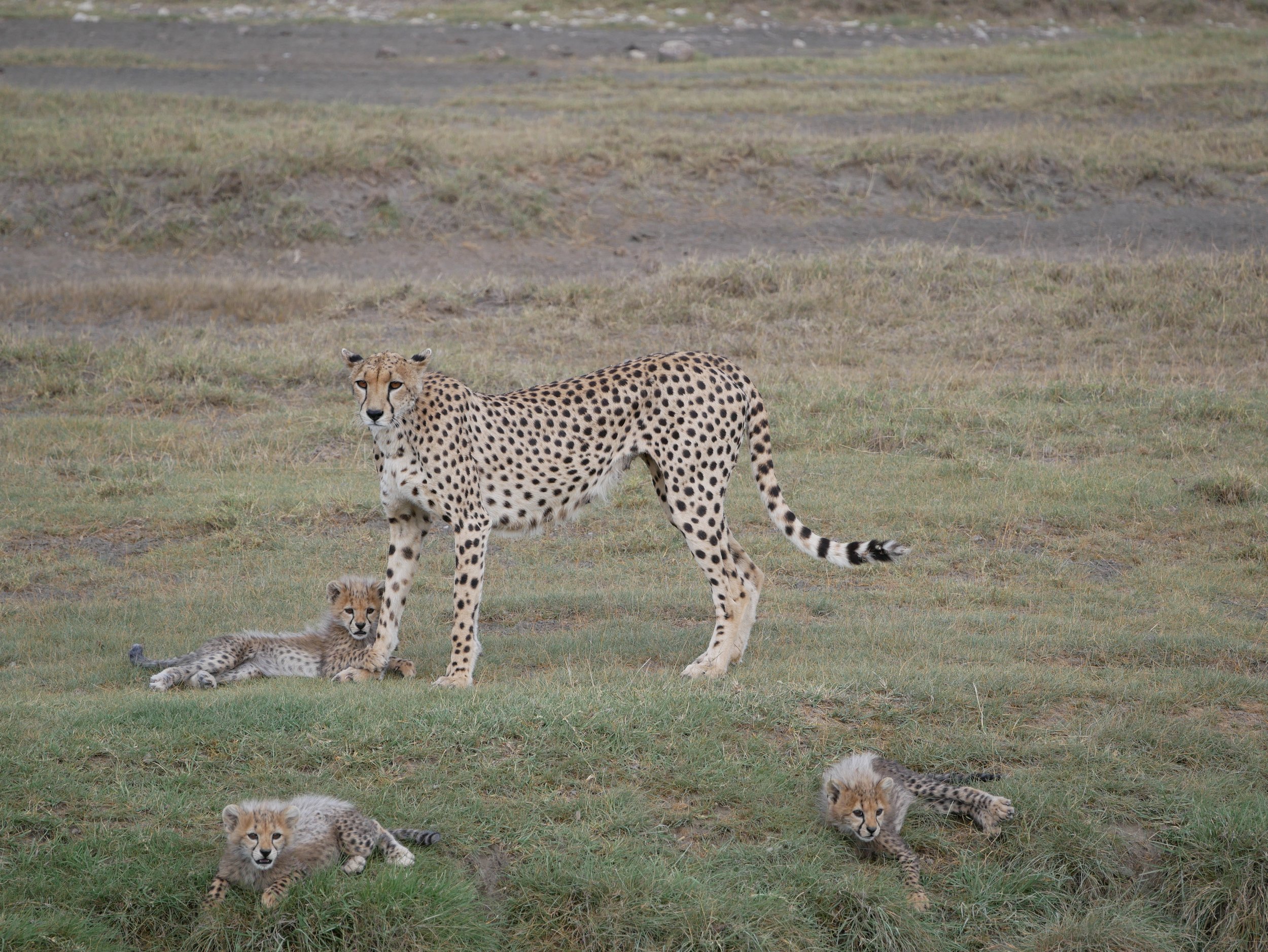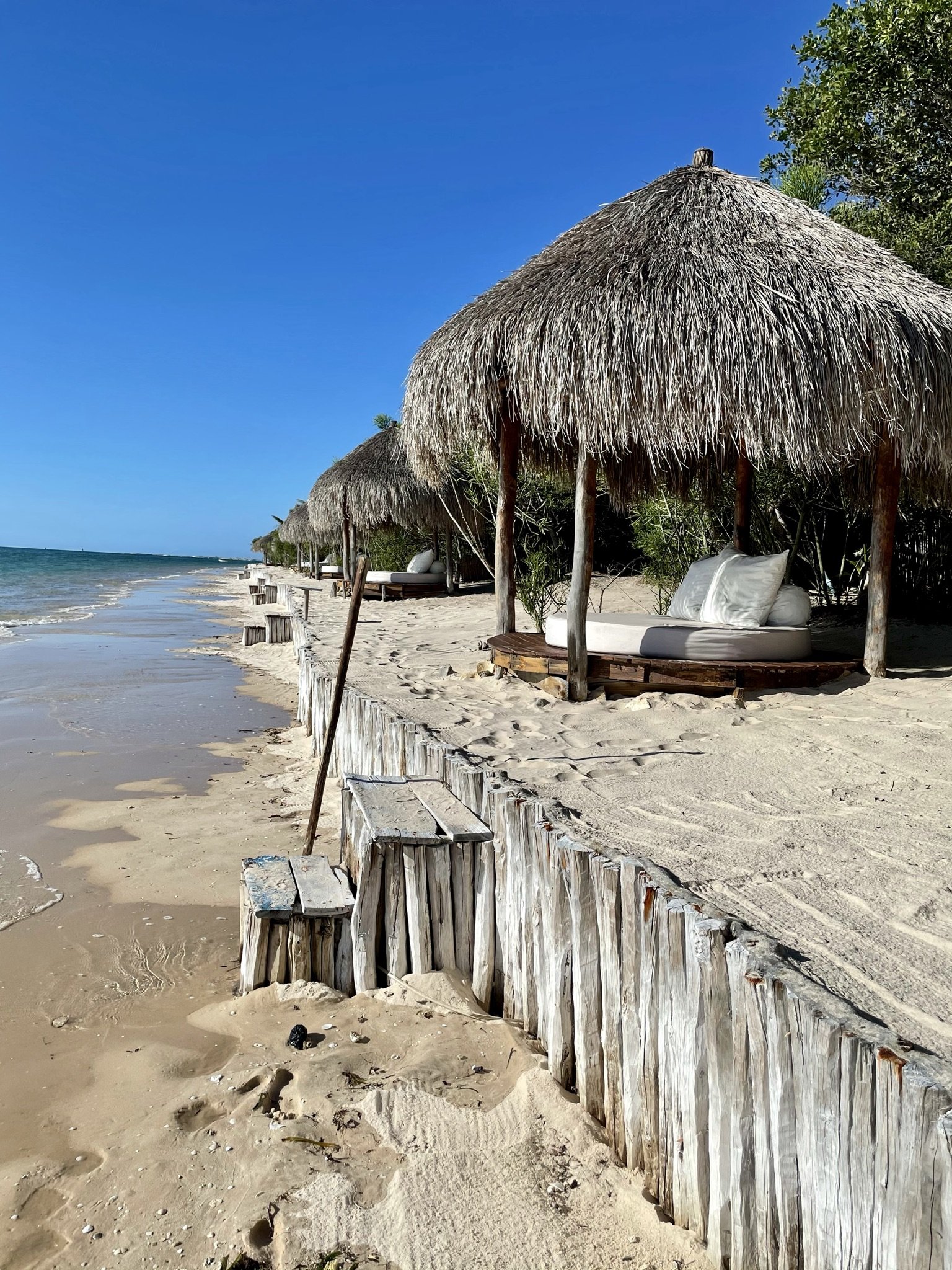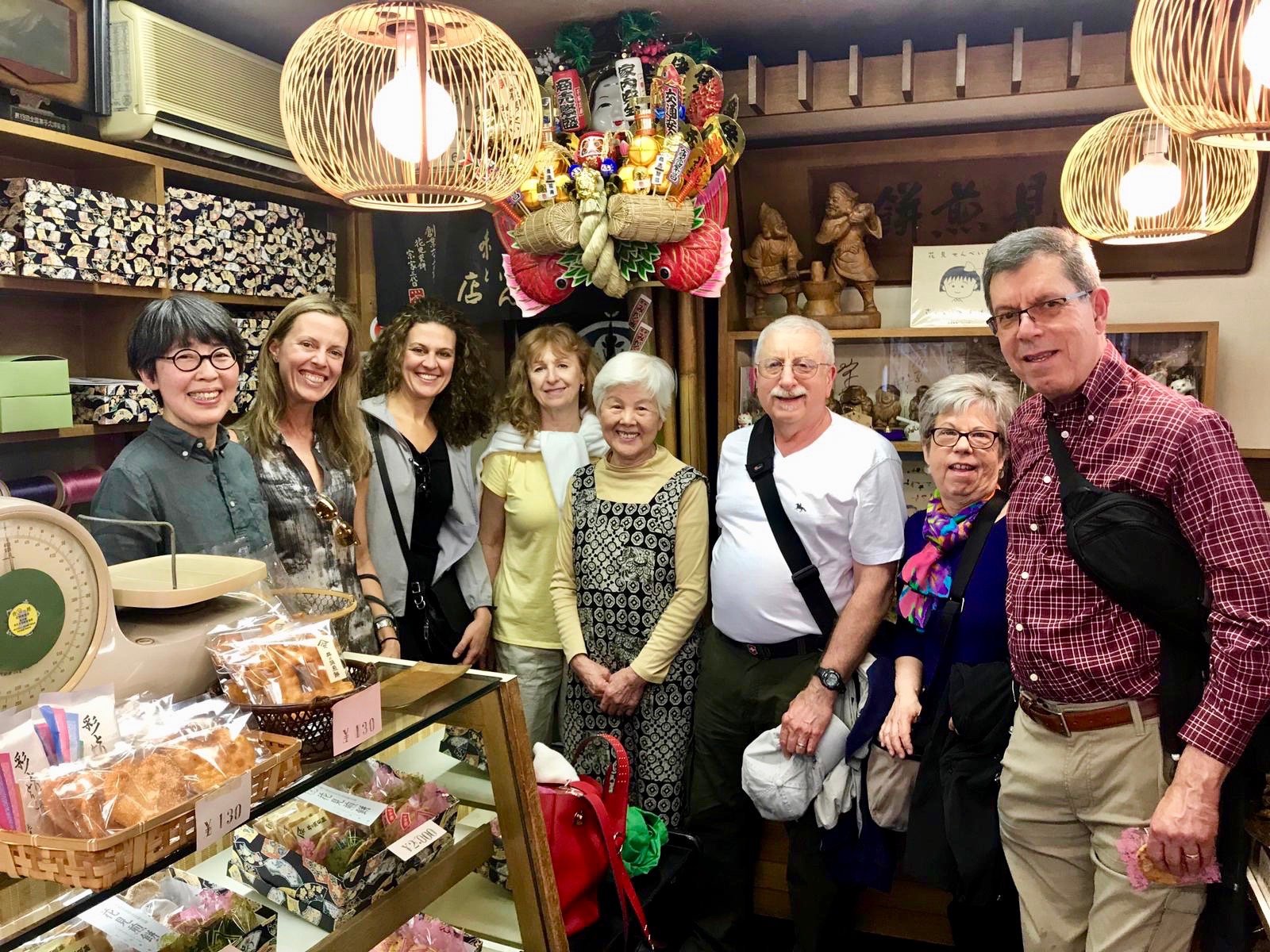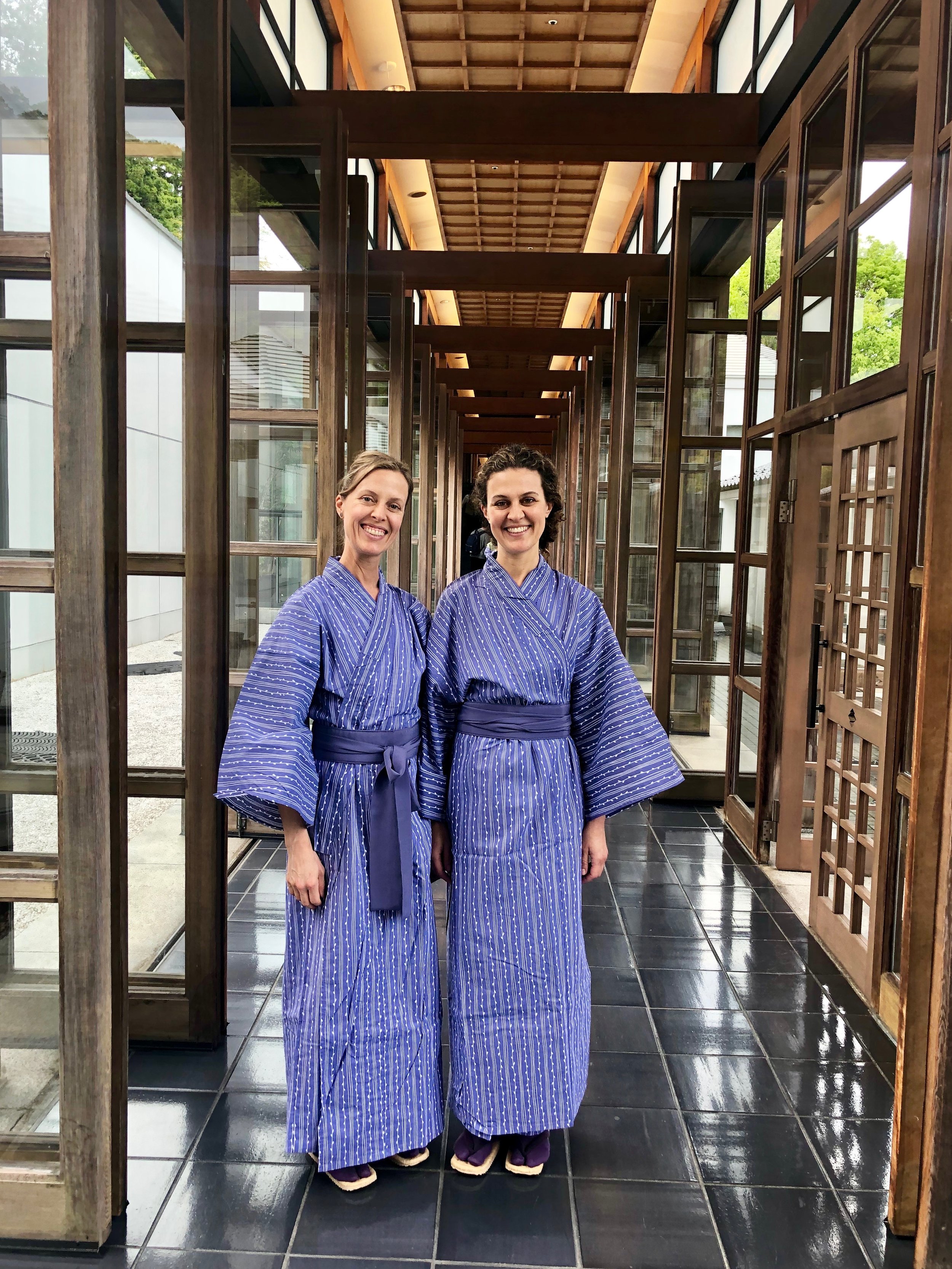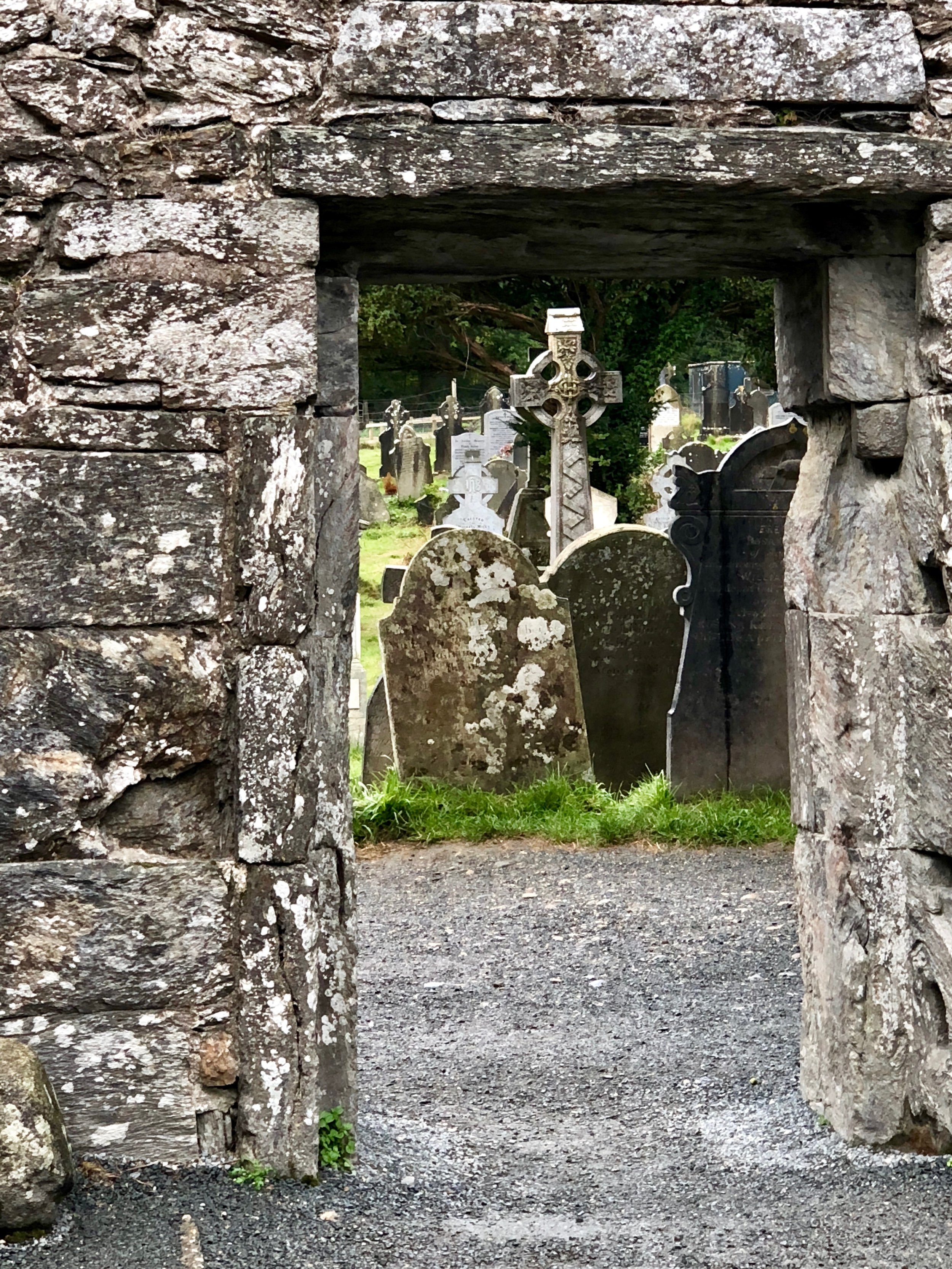Here is a trip that got postponed from 2020 due to Covid 19 and that until a couple of months prior was still up in the air if it would happen in 2021, but it did, and I’m so glad. Even though it was a harder time to travel with constant Covid tests, masks and Health Forms, we had hotels to ourselves, a lot less people on game viewings and the wildlife was incredible thanks to less noise, less pollution and less disruptions overall. My husband and I got to share this trip with our friend MP.
ITINERARY
{UGANDA} Entebbe [1] > Kyaninga Lodge in Fort Portal [3] > Kyambura Gorge Lodge at Queen Elizabeth National Park [2] > Gorilla Forest Camp in Bwindi National Park [3] {TANZANIA} Legendary Lodge in Arusha [1] > Gibb’s Farm in Ngororo Conservation Area [2] Namiri Plains Camp in the Serengeti [2] Dunia Camp in the Serengeti [2] {MOZAMBIQUE} Azure Benquerra [4]
FLIGHTS
Istanbul > Entebbe > Bwindi > Entebbe > Dar es Salaam > Arusha > Lake Manyara > Serengeti > Kilimanjaro > Entebbe > Johannesburg > Vilankulos > Benguerra (helicopter) > Vilankulos (helicopter) >Johannesburg > Addis Ababa > Athens
15 flights total - 4 of them in small bush planes and 2 in a helicopter. That's a lot of take-offs and landings!
UGANDA
Uganda came into our radar at first because we wanted to see mountain gorillas. That was goal number 1 on this trip. But we got to appreciate this country for so much more. It is a very mountainous lush & green country, with beautiful tea farms and banana trees everywhere. Every household grows their own banana trees for their own consumption since this is a staple in their diet. The Ugandans are lovely people, always with big smiles on their faces, and the kids are as adorable as it gets. Wildlife is abundant and diverse.
DAY 1 - Drive to Kibale Forest National Park
This morning our lovely guide Robert picked us up at our hotel in Entebbe and we departed on a scenic drive to Fort Portal near Kibale Forest National Park, which takes about 7 hours on a mix of paved and dirt roads. The park boasts the largest concentration of chimpanzees in Africa.
STAY: Kyaninga Lodge which is set against a stunning backdrop of Lake Kyaninga and the Mountains of the Moon beyond. The lodge’s cottages & main facilities are all built on wooden platforms along a mountain ridge. Be prepared to climb a LOT of stairs. This was our favorite lodge in Uganda, and even though it took about 1.5hrs to get to Kibale Forest, I would stay here again in a heartbeat.
DAYS 2 & 3 - In both mornings we went tracking for chimpanzees in the Kibale Forest National Park, which hosts a population of more than 1,000 chimpanzees. Since 1991, one 80-strong community has been habituated in Kanyanchu, allowing us to visit them pretty up close. They are as fun as you would expect them to be! One of these afternoons we hiked around Lake Kyaninga from the Lodge and it was stunning.
DAY 4 - This morning we set out on another scenic drive to Queen Elizabeth National Park.
STAY: Kyambura Gorge Lodge which is set on the Eastern edge of Queen Elizabeth National Park with beautiful views of the park. It was built using environmentally friendly local materials by a community workshop.
The game viewing at Queen Elizabeth National Park is quite good, with Cape Buffalos, Warthogs, Elephants, Horned Ugandan Kobs, Topis, Waterbucks, Lions, Hippos and many birds, among them the African Fish Eagle, Pelicans, Kingfisher and Grey Crowned Crane. But one big difference between this game drive in a National Park versus the ones we did on our previous trip to Namibia and Botswana in private reserves, is that there were a lot more cars approaching a viewing, and you had to stay on the main roads and could not get off-road to get closer to an animal. We had gotten spoiled so this was a bit disappointing. We also had to drive for about 1hr on a major road that crosses the park, before getting off to smaller dirt roads. In Namibia and Botswana, we were in a safari from the minute we left the lodge.
DAY 5 - Today we got to take a private boat cruise on the Kazinga Channel, filled with hippos, buffalos, elephants and tons of birds. This was the highlight of Queen Elizabeth National Park! Since we were on a boat, we could get quite close to a large number of elephants bathing in the channel and hanging out side-by-side with hippos and buffalos. It was incredible!
DAY 6 - We departed on another scenic 4-5hr drive to Bwindi in our search for mountain gorillas. It was quite a drive with patches of dirt roads that give you quite the “African massage” as they like to say. We stop along the way to see if we found the tree-climbing lions, but we were not lucky.
Uganda has the highest population of mountain gorillas in the world and they can’t be found anywhere else on earth but in the Virunga Mountains shared by Uganda, Rwanda, and the Democratic Republic of Congo. These gorillas inhabit two of Uganda’s national parks: Mgahinga National Park and Bwindi Impenetrable Forest National Park.
STAY: Gorilla Forest Camp is designed with tents that sit on raised wooden platforms that blend into the side of a forested mountain. Very comfortable and relaxing with a glamping vibe.
DAYS 7 & 8: Both days were dedicated to gorilla tracking and were really exciting and challenging. The Bwindi mountain gorillas are part of a worldwide population of about 1060. The latest count showed 459 gorillas in Bwindi and 604 in the other forests, with a total of 50 families. 21 of these families have been habituated, meaning they tolerate humans for about 1-hr a day, and can be visited. We got to visit the Mubare Group (9 gorillas total: one silverback, 4 females & 4 infants) and the Habinyanja Group (12 gorillas total: 1 silverback, 2 black backs + females and young ones). Trackers leave early in the morning to locate the different groups, and then once you are assigned your group, you get to start your trek with a guide, a ranger and porters who can help you up and down very steep hills. The first trek, even though it was steep, it was on a relatively well marked trail (about 5hrs RT). The moment we encountered the gorillas so close by was pure magic and one of those unforgettable moments in life! The infants are so curious, and approached us with no fear. Adorable does not even start to describe them! The silverback was comfortable in our presence, as were the females, and they just cared to eat. The second trek was extremely steep through the forest with no marked trails. A much harder hike and viewing (also about 5hrs RT). The silverback and black backs did not want to be in our presence and kept hiding. A pregnant female, however, was very comfortable and posed the entire time with her young sons. The beauty of booking two days of gorilla trekking is that we got to experience different families at different settings.
DAY 9: This was a long day of travel. We departed early for a 3hr drive to an airstrip and from there flew to Entebbe, then on our way to Tanzania.
TANZANIA
DAY 10: We took a charter flight from Arusha to Lake Manyara and then on a 1-hr drive to Gibb’s Farm. This was an incredible spot, and another highlight of our trip. We had a Masai Mara take us around the farm this afternoon and teach us about all the medicinal plants that are heavily used in their diets, and so much more.
STAY: Gibb's Farm is an oasis of green beauty in the midst of the often parched and dusty landscape of the outer slopes of the Ngorongoro Crater. German settlers built the old colonial farmhouse at Gibb’s Farm in the early part of the twentieth century and to this day, it still has the character of a well-kept private home. Today you set out on a guided Crater Rim Walk.you find expansive views of the surrounding farmland. At your back are the forested slopes teeming with wildlife, including elephant and leopard.
DAY 11: Today we set on a guided tour through the forest to the Ngorogoro Crater Rim and we were not prepared for what we encountered. Eight hours of hiking through thick, wet and misty forest, not always with a marked trail or very maintained pathway. Our guide had a machete and worked for hours opening a path for us, while we were on high alert for elephants who roam this forest. We finally arrived all wet and muddy to the rim of the Crater and it was completely foggy and we could not see anything 😊 Oh well! That’s just part of being in nature, you can control the outcome!
DAY 12: This is another travel day with a charter flight to the Serengeti. Daniel, our lovely guide for the next 6 days met us at the strip and was game drive all the way to our next lodge.
STAY: Namiri Plains Camp is in the eastern corner of the Serengeti, where the southern short grass plains meet acacia woodland. For 20 years, the grasslands of the Eastern Serengeti were closed to tourists to allow the cheetah population to replenish itself and in 2014, the region reopened and today is big-cat territory, where cheetah roam the area in pursuit of prey, and lion and leopard hunt undisturbed. Each room is in a very architecturally gorgeous & luxurious tent, with a bath tub on a terrace overlooking the savannah.
DAY 13: This morning we rose early to scout for game from our vehicle, joining wildlife in their prime hunting hours. After a siesta during the hottest time of day, we ventured out again as animals take their first stretches in preparation for their evening meal. We had incredible sightings but the highlight for me was a mother cheetah with three 1-month old babies who we had to ourselves for at least 1-hr. that was worth going all the way to Tanzania!
DAY 14: We had an unexpected surprise this morning that made us get up at 4am and drive for almost 2hrs in the dark so we could watch the sunrise over the Serengeti in a hot air balloon. WOW, what a treat!! From there our game drive took us to Dunia Camp, our next lodge.
STAY: Dunia Camp has an exceptional location in a secluded valley of the Serengeti. It has a much more green and lush surrounding than Namiri Plains Camp and it felt like we were in a different park. The rooms are in tents that look more like you would expect from a glamping tent, but still very comfortable. We slept or better tried to sleep, listening to lions roar outside as if they were just outside the canvas wall of our tent.
DAY 15: Another typical day on a safari trip: wake up super early and leave on a game drive. Not 30 minutes into a very peaceful drive, without seeing another car, Michael spotted a rhino at a distance and our guide immediatley turned off the car. We stayed very quiet as he approched us for about 10 minutes without seeing us since rhinos don’t have good eye sight. These are very elusive animals who take off the minute they sense anybody approching and so are very difficult to see. That is all to say that 10 minutes observing him, felt like an eternity and we were incredibly lukcy. Our guide had not seen one in about 2 years and he was literally emotional. We could have turned around and gone back to the lodge since it does not get better than this, but we continued on to another spectacular day full of lions, giraffes, elephants, wildebeests & zebras (massive numbers of those as part of the tail end of the Great Migration), not to mention that vast array of beautiful birds.
DAY 16: After breakfast at camp we departed on a flight to Kilimanjaro, from there to Entebbe, and onward to Johannesburg, where we had to spend the night before flying to Mozambique the next morning This was an extremely long travel day, but required in order to get from one remote location to another. But now all I can recall are the magnificent places I visited and days like this just dissipate away.
STAY: Intercontinental Hotel at the Johannesburg Airport was unexpectatedly a very nice spot for a layover.
MOZAMBIQUE
DAY 17: A short flight from Johannesburg took us to Vilankulos, and as we got there a helicopter whisked us away on a short flight over paradise to the island of Benguerra, our home for the next 4 nights.
STAY: Azura Benguerra, with just 20 villas nestled along one of the last undiscovered stretches of beach in the world, offered us pure relaxation!
DAY 18, 19 & 20: Our days comprised of breakfast, lunch and dinner on the sand of the beach, right by the water & illuminated by candles; walks on almost deserted beaches except for locals fishing, which is one of the only activities besides tourism that employs the population of this island; boat trips to see other islands and go snorkeling on one of the richests reefs I have ever seen; massages & sundowner coacktails. Way to end another fantastic adventure in Africa! It’s impossible not to fall in love with this continent.
































